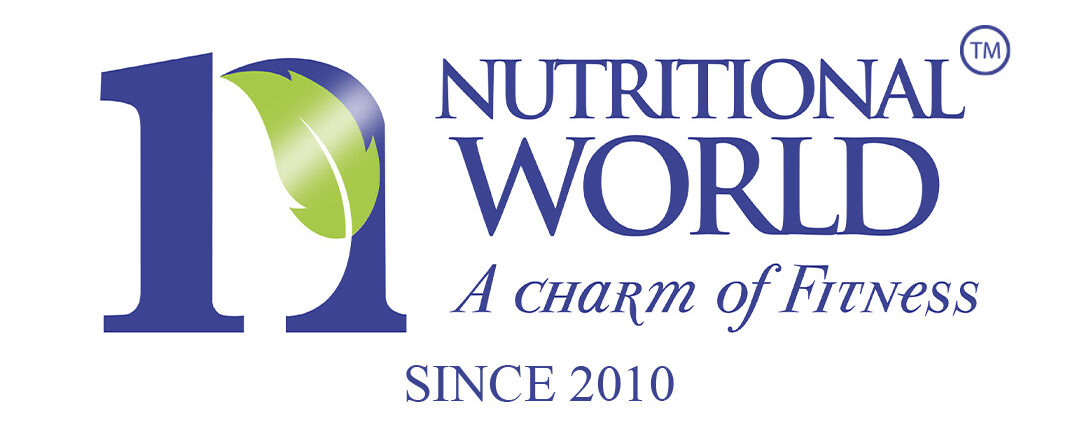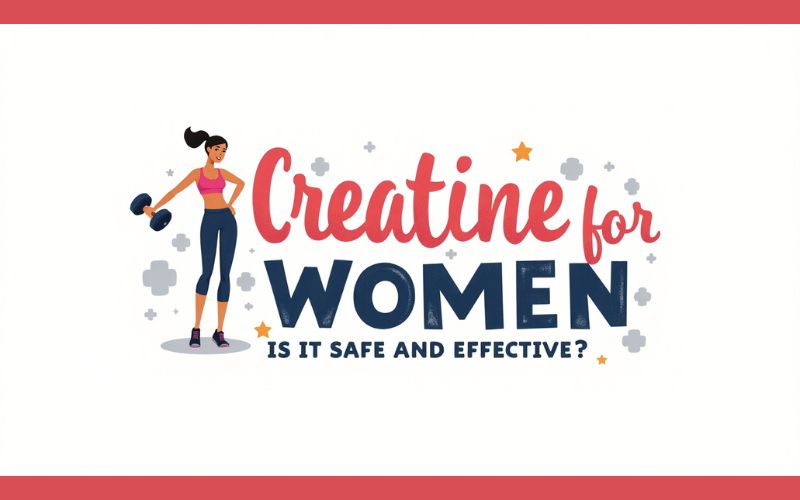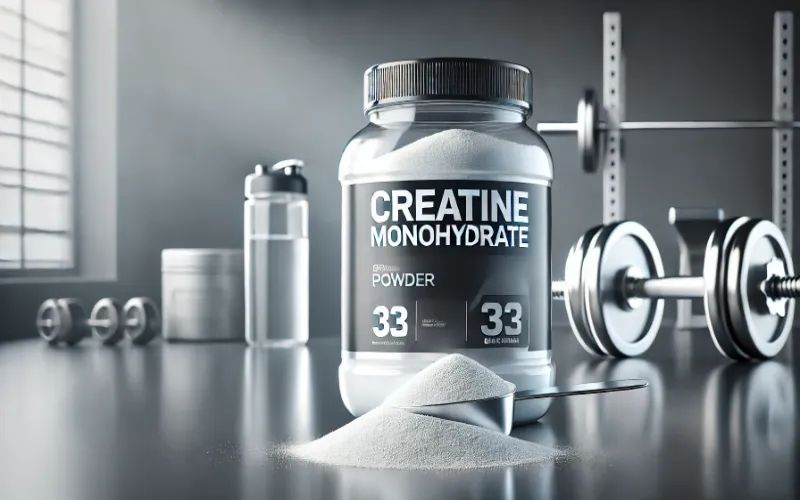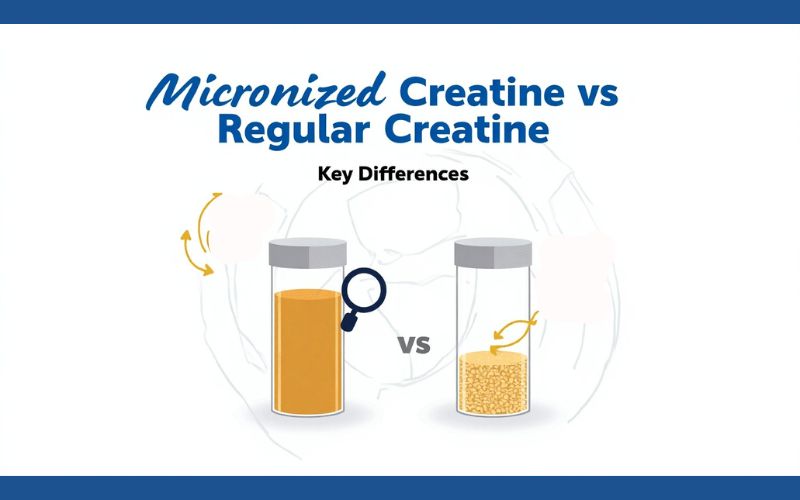Creatine is one of the most popular and well-researched supplements in the fitness world. It’s widely used by athletes, gym-goers, and bodybuilders to improve strength, increase lean muscle mass, and boost exercise performance. However, like any supplement, it’s essential to understand the potential side effects of creatine and how to avoid them.
In this article, we’ll explore the most common creatine side effects and offer practical tips to minimize or prevent them, so you can use this supplement safely and effectively.
Table of Contents
What is Creatine and Why is it Used?
Creatine is a naturally occurring substance found in muscle cells. It helps produce energy during high-intensity workouts, making it a favorite among those who engage in weightlifting, sprinting, and other explosive activities.
Most people get some creatine through foods like red meat and fish, but many turn to creatine supplements to boost their levels and maximize performance. While it’s generally considered safe, understanding its potential side effects is key for anyone considering long-term use.
Common Creatine Side Effects
Although creatine is safe for most people, especially when used at recommended doses, some users may experience side effects. Let’s take a closer look at the most commonly reported issues.
1. Water Retention and Weight Gain
How it happens:
Creatine draws water into your muscles, which can cause temporary weight gain and bloating.
How to avoid it:
Stay well-hydrated and don’t panic about the scale. The weight gain is usually from water, not fat. It’s a natural and harmless part of the process.
2. Stomach Discomfort and Bloating
How it happens:
Taking too much creatine at once, especially on an empty stomach, can lead to bloating, cramps, or gastrointestinal discomfort.
How to avoid it:
- Split your daily dose into smaller servings throughout the day.
- Take it with food or mix it into a post-workout shake.
- Avoid loading phases that require large amounts upfront, unless necessary.
3. Muscle Cramps
How it happens:
Though less common, some people report muscle cramps after starting creatine. This may be linked to dehydration or imbalances in electrolytes.
How to avoid it:
- Drink plenty of water daily (at least 8-10 glasses).
- Maintain a balanced diet rich in magnesium, potassium, and sodium.
4. Kidney Concerns
How it happens:
There’s a common myth that creatine harms kidney function. However, studies show that creatine supplements do not pose a risk to healthy individuals.
How to avoid it:
If you have existing kidney issues or concerns, consult a healthcare professional before starting any supplement. For healthy individuals, using recommended doses poses no long-term kidney risks.
5. Diarrhea or Nausea
How it happens:
High doses or poor-quality creatine supplements may upset the stomach and cause diarrhea or nausea.
How to avoid it:
- Use a high-quality creatine monohydrate supplement.
- Stick to the standard 3–5 grams per day dosage.
- Take it with food to ease digestion.
6. Acne or Skin Breakouts
How it happens:
Some users believe creatine may contribute to acne due to increased water retention and hormonal shifts during intense workouts. However, no scientific link has been established.
How to avoid it:
- Practice good skincare.
- Stay hydrated and manage stress levels, especially if you’re training hard.
Tips for Safe Creatine Supplementation
To make sure you’re getting all the benefits of creatine supplements without the unwanted effects, follow these simple guidelines:
- Choose quality: Opt for pure creatine monohydrate with no added fillers or artificial ingredients.
- Stick to the right dose: 3 to 5 grams per day is enough for most users.
- Hydrate well: Proper hydration helps prevent bloating, cramps, and other issues.
- Cycle if needed: Although not necessary, some people find that cycling on and off creatine helps reduce water retention and digestive issues.
- Pair with a healthy lifestyle: Combine creatine use with a balanced diet, proper sleep, and regular training for the best results.
Is Creatine Safe for Everyone?
While creatine supplements are generally safe for healthy individuals, they may not be suitable for everyone. People with pre-existing kidney or liver conditions, or those on certain medications, should always speak to their doctor before starting creatine.
Additionally, teenagers or young adults should consult with a healthcare professional or nutritionist before using supplements of any kind, including creatine.
Final Thoughts
Creatine is a safe and effective supplement when used correctly. Most of its side effects are mild and can be easily managed with the right strategies. If you’re aware of how your body responds and follow proper usage guidelines, you can enjoy the benefits of creatine without the downsides.
To get started with high-quality, safe-to-use creatine supplements, check out our wide range of options at Nutritional World. We offer premium, tested products that support your fitness goals while ensuring safety and results.
FAQs
- Can creatine cause kidney damage?
No. Numerous studies have shown that creatine does not cause kidney damage in healthy individuals when taken at recommended doses. - How do I avoid bloating when taking creatine?
Take smaller doses throughout the day, avoid loading phases, and ensure you’re drinking plenty of water. - Should I take creatine every day?
Yes, daily supplementation (3–5 grams) is ideal for maintaining muscle creatine levels and reaping consistent performance benefits. - Can creatine cause acne?
There is no scientific evidence linking creatine to acne. However, increased training intensity may affect hormones and skin conditions in some individuals.
5. Is creatine safe for women?
Absolutely. Creatine supplements are safe for women and can support muscle growth, strength, and performance just as they do for men.


























